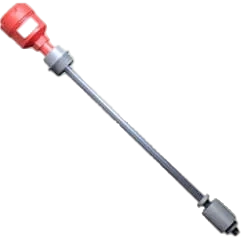What Is A Chemical Level Switch?

In order to keep track of the amount of liquid contained within a chemical tank, a chemical level switch is typically put in the tank. It is critical for a variety of reasons to equip bulk chemical storage tanks with a level switch for the corresponding chemical. In the first place, it makes it possible to monitor and regulate the amount of liquid chemicals that are contained within the tank. This is extremely important from a safety standpoint because an overfilling of the container or running out of the chemical could result in spills or other potentially hazardous circumstances. Switches that detect high or low levels of a chemical can prevent the occurrence of the aforementioned scenarios by activating an alert or cutting off the flow of the chemical automatically when the threshold for that level is reached.
There are a few distinct varieties of chemical level switches on the market today, and each one has a unique set of benefits and drawbacks. Float level switches are a frequent type that can be found. This kind of chemical level switch makes use of a buoyant device, such a float, that rises or lowers in response to the level of the liquid in the container. When the float reaches a predetermined level, it triggers a switch mechanism that either closes a valve or sounds an alarm. This happens because the float is connected to the switch mechanism. Float-type chemical level switches are not only relatively straightforward and affordable, but they are also versatile enough to serve as both high- and low-level alarms.
There is also something called a vibration level switch that can detect changes in chemical levels. This type of switch makes use of a mechanical vibration sensor that detects changes in the level of liquid by sensing the change in vibration induced by the movement of the liquid. This type of switch may be distinguished from other types of switches by its use of a mechanical vibration sensor. Float level switches are often less accurate and reliable than their vibration counterparts, making vibration level switches a popular choice for use in industrial settings.
The capacitive level switch is the third variety of chemical level switch that can be found. The ability of this sort of switch to detect changes in level is achieved through the utilisation of a change in capacitance, which can be defined as the capacity to hold an electrical charge. When monitoring high levels of conductive liquids, capacitive level switches are very helpful because of their versatility. They are sensitive to changes in the level of the liquid, and they are able to detect even minute alterations in the level.
In addition to these varieties, there are also additional kinds of level switches available, such as ultrasonic, radar, and laser level switches. These many kinds of chemical level switches each have their own set of advantages and disadvantages, and they are best utilised in certain contexts.
In general, chemical level switches are a crucial component of ensuring that chemical storage and handling procedures are carried out in a safe and efficient manner. They offer a method that is both cost-effective and efficient for preventing overfilling and running out of chemicals, hence lowering the likelihood of spills and other potentially hazardous circumstances. In addition, because there are increasingly more restrictions concerning the safety of the workplace, it is essential to make sure that the chemical level switches are installed and maintained in accordance with the requirements in order to avoid incurring any fines.


